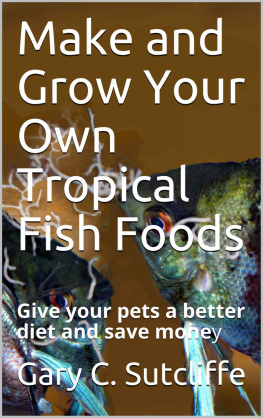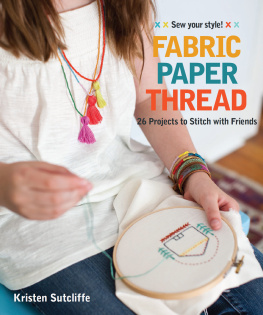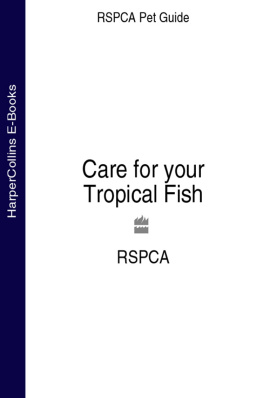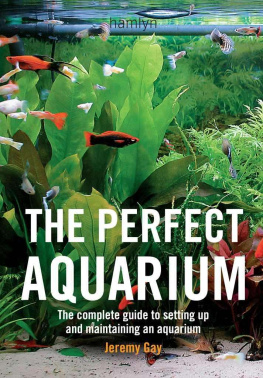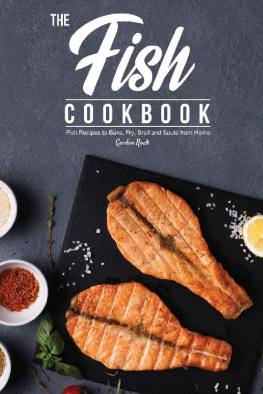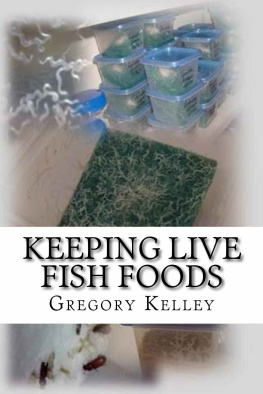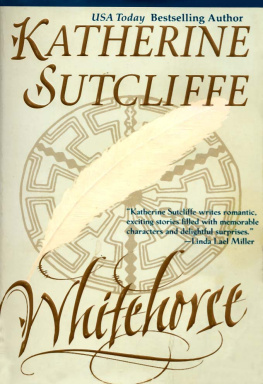Sutcliffe - Make and Grow Your Own Tropical Fish Foods
Here you can read online Sutcliffe - Make and Grow Your Own Tropical Fish Foods full text of the book (entire story) in english for free. Download pdf and epub, get meaning, cover and reviews about this ebook. year: 2018, genre: Children. Description of the work, (preface) as well as reviews are available. Best literature library LitArk.com created for fans of good reading and offers a wide selection of genres:
Romance novel
Science fiction
Adventure
Detective
Science
History
Home and family
Prose
Art
Politics
Computer
Non-fiction
Religion
Business
Children
Humor
Choose a favorite category and find really read worthwhile books. Enjoy immersion in the world of imagination, feel the emotions of the characters or learn something new for yourself, make an fascinating discovery.
Make and Grow Your Own Tropical Fish Foods: summary, description and annotation
We offer to read an annotation, description, summary or preface (depends on what the author of the book "Make and Grow Your Own Tropical Fish Foods" wrote himself). If you haven't found the necessary information about the book — write in the comments, we will try to find it.
Sutcliffe: author's other books
Who wrote Make and Grow Your Own Tropical Fish Foods? Find out the surname, the name of the author of the book and a list of all author's works by series.
Make and Grow Your Own Tropical Fish Foods — read online for free the complete book (whole text) full work
Below is the text of the book, divided by pages. System saving the place of the last page read, allows you to conveniently read the book "Make and Grow Your Own Tropical Fish Foods" online for free, without having to search again every time where you left off. Put a bookmark, and you can go to the page where you finished reading at any time.
Font size:
Interval:
Bookmark:
Make and Grow Your Own Tropical Fish Foods
Give your fish a healthier diet and save money
Gary C. Sutcliffe
Copyright 2018 Gary C. Sutcliffe
All rights reserved
No part of this work may be reproduced in any form or by any means, photocopying, electronic or mechanical, except by permission in writing from the author. All translation rights are reserved.
First Edition 2018
ISBN:
Paperback: 9781983299995
Cover Photo: Angelfish eating white worms. James Gasior photo.
A cknowledgments
I need to thank a lot of people for their assistance in writing this book. First of all, thank you to all the members of the Wisconsin Area Killifish Organization who have been my mentors in the 30 plus years since I became a member. It is a rare meeting that I attend that I dont learn something useful about keeping tropical fish, especially killifish in which I specialize.
Thanks go out to Rick Ivik who critiqued the book and gave many useful suggestions on raising live foods. Being a teacher, Rick has experience in pointing out poorly thought out sections and poor grammar. Rick is a former member of the Board of Trustees of the American Killifish Association.
Jim Gasior has given me lots of advice (not to mention some really neat fish) over the years. He made many useful suggestions while I prepared this book. Jim is a past president of the American Killifish Association and is an expert at keeping killifish. Jim also provided pictures including the book cover.
While Jim Gasior was reviewing the book, his wife, Gis Gasior, took it upon herself to read through the book without being asked. While she does not keep fish herself, her insights and suggestions were most valuable.
Craig S. Berg provided many useful suggestions as well as pointing out some errors before they got published and caused me embarrassment. Craig was the Reptile and Aquarium Curator at the Milwaukee County Zoo before his retirement.
I also had the help of Gary L. Drasch, whose interest in fish disappears if you cant catch them on a fly rod. Gary provided motivating kicks in the pants as needed after he published his book Ham Radio is Alive and Well which came out about the time I started writing this book. His views and observations as a complete outsider were invaluable in pointing out areas that were not clear to readers who are not familiar with keeping fish. Garys advice on the process of publishing a book was also a tremendous help.
Brian Becker is a sports writer and teaches English but does not keep fish. Being my son in law, I was able to impose on him to critique early revisions. His comments were insightful.
Peter Chow was a great help in preparing the pictures for the eBook version of this book.
Richard P. Moran has been my go-to person for advice and bouncing off ideas for nearly four decades. Our discussions have been mostly about electronic technology, but Rich volunteered to read the manuscript and pointed out a number of issues.
Finally, thank you, Karen and Jennifer, for putting up with me and my strange hobbies all these years.
All photos are by the author unless otherwise noted. Cover photo by James Gasior.
Introduction
Keeping tropical fish in a home aquarium is a popular hobby. Aquariums are educational for children. Tropical fish are beautiful, and it is relaxing to watch them swim in their tanks. They dont scratch the furniture, bark all night or need to be let out. You can leave them alone with no care for a few days without doing any harm. These are the only pets some people can keep due to landlord restrictions. There are many reasons that people keep fish.
Most aquarists with one or a small number of tanks feed their fish commercial dry food. Perhaps this is occasionally supplemented with frozen or freeze-dried brine shrimp, blood worms or a similar product. Local pet shops and stores with pet departments have a wide variety of prepared fish food for sale.
There is nothing wrong with these foods. The better brands of flake and pellet fish food are scientifically formulated to be a complete diet. They are convenient, which is helpful for those of us with busy lifestyles. Despite having many live food cultures and other homemade foods available, commercially prepared foods form the backbone of what I feed my fish. Except for small baby fish which require tiny food, the morning feeding is usually commercial flake food.
While most fish do fine on a steady diet of flake and other commercially prepared foods, there are some downsides. It is expensive, especially if you have a lot of tanks or large fish with equally large appetites
Other foods may be necessary if you want to breed your fish. Many species of fish will not get into spawning condition unless they get supplemental feedings. The resulting fry often require small sized food. They should also have food available at all times since their small stomachs cant hold much and they have not built up fat reserves. Over feeding of dry or other prepared foods will foul the water. Fry tend to be especially sensitive to poor water conditions. Some live foods can safely be given in large enough quantities to last for hours, letting the fry snack all day. They will grow much faster in such an environment.
Other fish simply refuse to eat prepared foods. This is especially true if you maintain wild caught native fish. Fish that are not fed prepared flakes and pellets early in their lives may not ever accept them.
Finally, hobbies are meant to be time spent doing things that you enjoy. Like cooking food for your family, making and raising food for your fish can be an enjoyable and rewarding part of your fish keeping activities.
This book shows you how to make and raise food for your fish. Particular emphasis is placed on keeping costs to a minimum. The goal of this book is to have your fish eating better and at a lower price than they currently do. Wouldnt you prefer to spend that money on more fish or equipment?
Most of the materials discussed in this book are available at your local grocery or hardware stores. Others can be found cheaply at local charity thrift shops or purchased online. You can reuse food containers that you usually throw out.
When supplementing the fish diet with the foods described in this book, the fish wont thank you or express their appreciation like a cat or dog. They will show it in other ways. You will find that your tropical fish are more active, colorful, breed more often, and grow more quickly when supplementing their diet with some of the foods described in this book. If you can save some money and have fun along the way, so much better!
CONTENTS
1 Getting Started
A s with any activity, having the right tools and materials will make the work more enjoyable and efficient. The first part of this book covers using the foods that are already in your kitchen or available from the grocery store. The same utensils already in your kitchen are probably all you need.
The second part of this book covers raising living organisms to feed your fish. Raising live food requires additional equipment and materials. You can use some of your cooking utensils from the kitchen, but you will probably want to get a dedicated set just for your fish. Other family members may not be happy with a baster used for harvesting small worms being used again for preparing the Thanksgiving turkey.
Kitchen gadgets seem to accumulate over time, and this might be a good excuse to clean out that kitchen drawer and get rid of the excess measuring spoons, knives, etc. Allocate the extras to fish keeping. If you still need a few utensils, thrift shops or dollar stores might have what you need for very little money. Remember, fish are not brand conscious and dont care if their food is prepared in a brand new high-end blender or a $5 cast off found at a garage sale.
Next pageFont size:
Interval:
Bookmark:
Similar books «Make and Grow Your Own Tropical Fish Foods»
Look at similar books to Make and Grow Your Own Tropical Fish Foods. We have selected literature similar in name and meaning in the hope of providing readers with more options to find new, interesting, not yet read works.
Discussion, reviews of the book Make and Grow Your Own Tropical Fish Foods and just readers' own opinions. Leave your comments, write what you think about the work, its meaning or the main characters. Specify what exactly you liked and what you didn't like, and why you think so.

